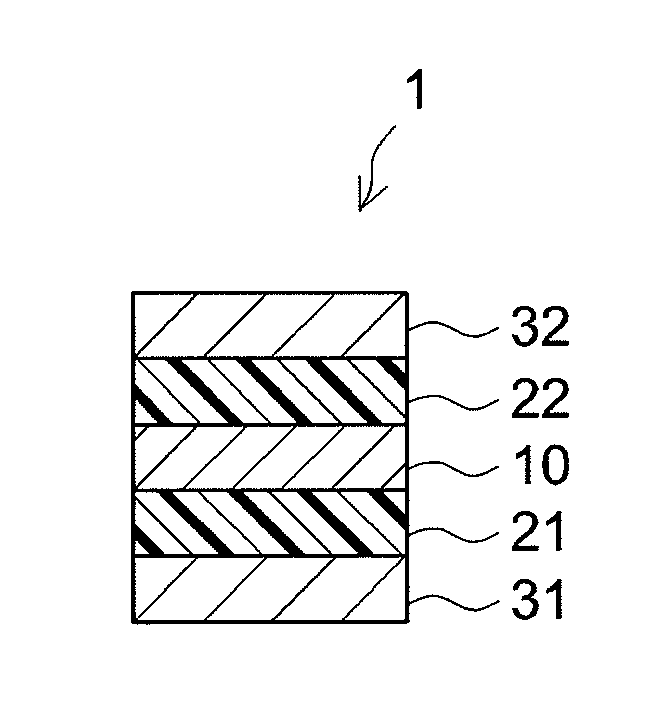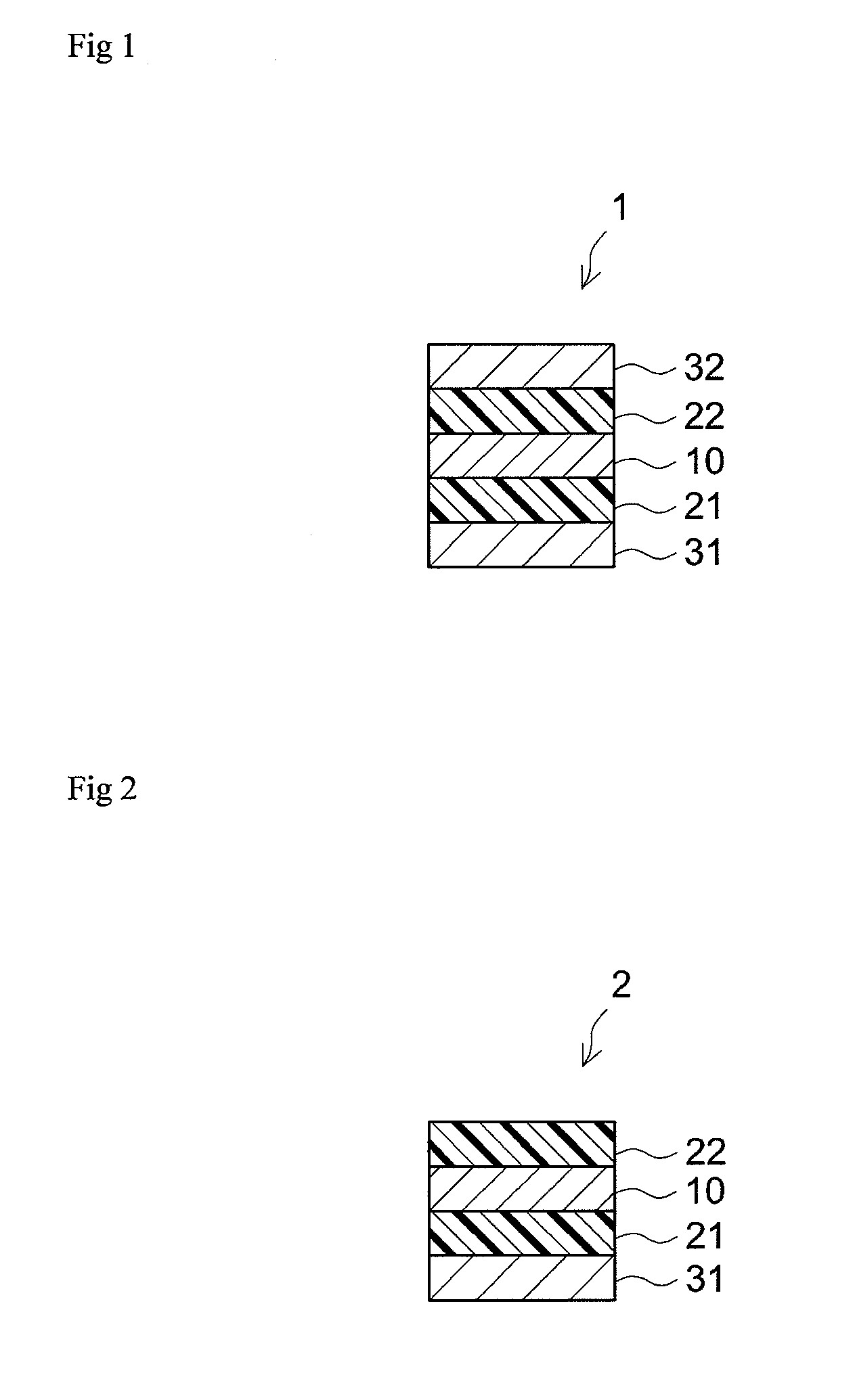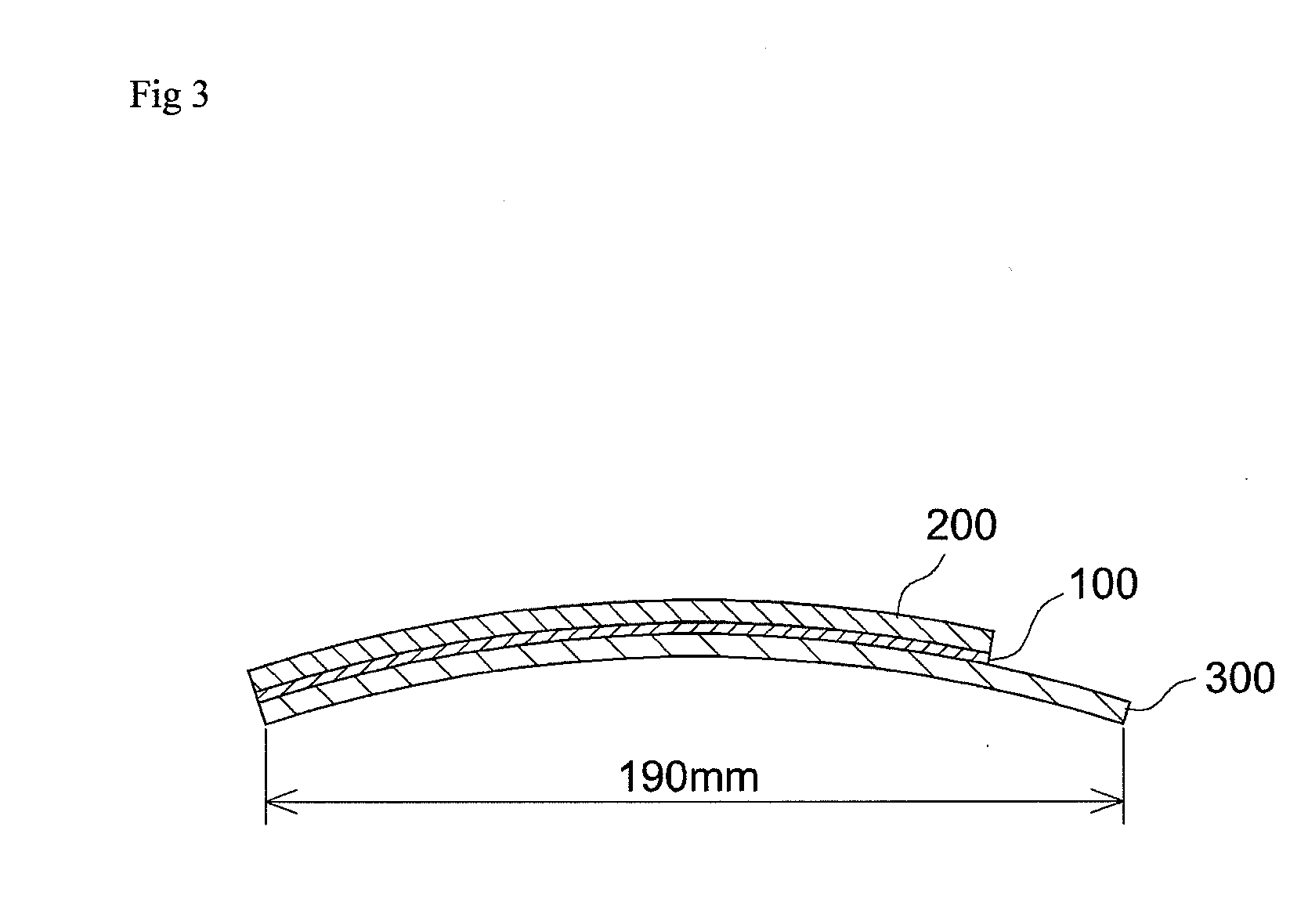Double-sided pressure-sensitive adhesive sheet
a pressure-sensitive adhesive and double-sided technology, applied in the direction of adhesives, film/foil adhesives, thin material handling, etc., can solve the problems of residue of psa layer remaining on the adherend, affecting the efficiency of part disassembly work, etc., to achieve a higher degree of balance between adhesive properties and re-peelability, and suitability strength
- Summary
- Abstract
- Description
- Claims
- Application Information
AI Technical Summary
Benefits of technology
Problems solved by technology
Method used
Image
Examples
example 1
[0129]A release liner substrate having a 25 μm thick PE layer laminated on one side of wood-free paper (grammage: 100 g / m2) was prepared. A mixture of a non-transferring, heat-curable solvent-free silicon-based release agent and curing catalyst was coated onto the PE layer of the substrate so a coated amount of 1.1 g / m2. This was then dried and cured by holding for 1 minute at 120° C. to obtain a release liner P. The amount of silicone transfer of this release liner P was 0.8 kcps. The peel strength as measured according to a method to be described later was 0.3 N / 50 mm. The amount of silicone transfer was measured under the following conditions using the model “ZSX-100e” XRF analyzer manufactured by Rigaku Corp.
[0130]X-ray source: Vertical Rh tube
[0131]Analysis range: Within a circle having a diameter of 30 mm
[0132]Analyzing crystal: Si—Kα
[0133]Output: 50 kV, 70 mA
[0134]70 parts of BA, 27 parts of 2EHA, 3 parts of AA, 0.1 part of 2-hydroxyethyl acrylate and ethyl acetate were place...
example 2
[0137]A double-sided PSA sheet as related to Example 2 was obtained in the same manner as Example 1 with the exception of using a non-woven fabric substrate T (MD tensile strength: 11 N / 10 mm, CD tensile strength: 9.9 N / 10 mm, grain ratio: 90%, thickness: 53 μm, grammage: 15 g / m2) instead of the non-woven fabric substrate S.
example 3
[0138]A UV-curable, solvent-free silicone release agent was coated onto a PE layer of a substrate obtained in the same manner as Example 1 instead of the mixture of release agent and catalyst used in Example 1. The coated amount of the release agent was 1.3 g / m2. After coating the release agent, the release agent was cured by irradiating with UV light under conditions of illuminance of 2 W / cm2 and line speed of 70 m / min using a high-pressure mercury vapor lamp for the light source to obtain a release liner Q. The amount of silicone transfer of this release liner Q was 4.8 kcps. The peel strength was 0.6 N / 50 mm.
[0139]A double-sided PSA sheet as related to Example 3 was obtained in the same manner as Example 1 with the exception of using the release liner Q instead of the release liner P.
PUM
| Property | Measurement | Unit |
|---|---|---|
| Temperature | aaaaa | aaaaa |
| Temperature | aaaaa | aaaaa |
| Temperature | aaaaa | aaaaa |
Abstract
Description
Claims
Application Information
 Login to View More
Login to View More - R&D
- Intellectual Property
- Life Sciences
- Materials
- Tech Scout
- Unparalleled Data Quality
- Higher Quality Content
- 60% Fewer Hallucinations
Browse by: Latest US Patents, China's latest patents, Technical Efficacy Thesaurus, Application Domain, Technology Topic, Popular Technical Reports.
© 2025 PatSnap. All rights reserved.Legal|Privacy policy|Modern Slavery Act Transparency Statement|Sitemap|About US| Contact US: help@patsnap.com



